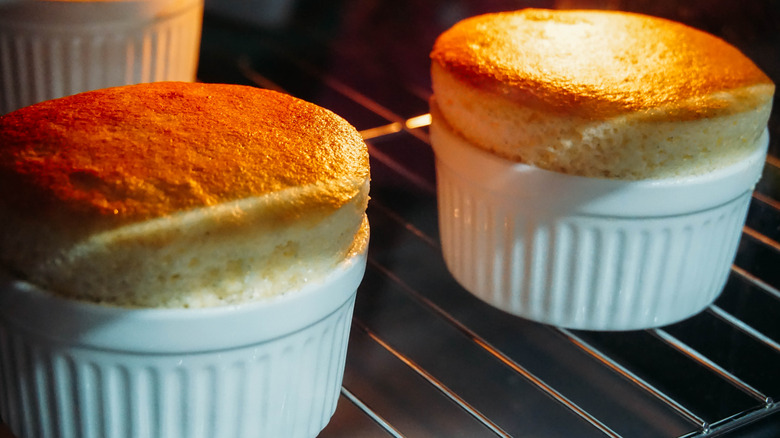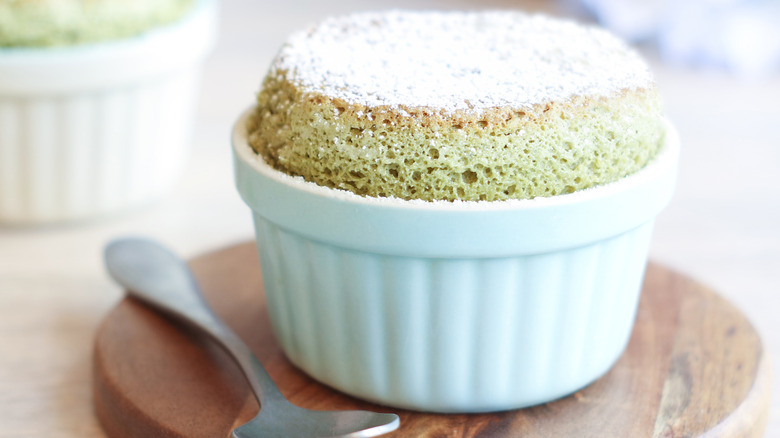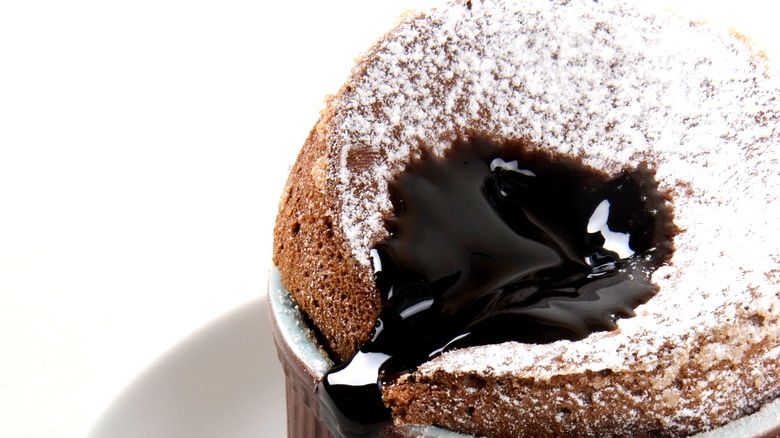The Reason Air Is So Important In A Soufflé
Soufflés can be intimidating for even the most experienced cooks. They are notoriously finicky, and even a small mistake can ruin the soufflé. But it doesn't have to be so scary. With a little know-how (and lots of practice), you too can easily make a perfect soufflé.
A soufflé is a classic French dish that can be both sweet and savory. It's made with eggs, butter, flour, and milk or cream, and oftentimes cheese, fruit, or chocolate is added in for flavor, per Wonderopolis. But what makes the elegant soufflé so deliciously puffy and airy?
The answer lies in the egg whites. The key to a good soufflé is incorporating lots of air into the egg mixture so that it turns out light and fluffy. Making a perfect soufflé might seem like an elusive feat, but we promise it's within your reach. By following these simple tips and tricks, you'll be whipping up beautiful and delicious soufflés in no time at all.
But first, let's take a closer look at the science behind why air is so important in a soufflé.
The importance of air
When you think of a soufflé, you probably think of a tall, puffy dish that's light and airy. That's because a good soufflé should be filled with air bubbles. According to MasterClass, the word "soufflé" comes from the French verb souffler, which means "to blow."
So, how do you get all those air bubbles into the soufflé mixture? Egg whites and a lot of whisking.
When egg whites are whisked, they form stiff peaks. This is because the proteins in the egg whites or albumen start to bond with each other. As you continue to whisk, more and more air is incorporated into the mixture and the peaks become stiffer and stiffer. These trapped pockets of air in the whipped egg white mixture give the soufflé its light and airy texture. When baked, the heat from the oven causes the egg whites to expand, resulting in a beautiful puffed-up soufflé.
In addition to incorporating lots of air, it's important to not overmix the egg whites, per the Spruce Eats. Folding the egg whites into the rest of the soufflé mixture is the best way to do this. If you mix them too much, the proteins will start to break down and release the trapped air pockets. You'll still end up with a light and fluffy soufflé, but it won't be as tall or puffy as it could be. It might even be too dense.
Baking the soufflé
Once you've mixed everything together and folded in as much air as possible, it's time to bake your soufflé. Baking powder is often added to soufflés to help them rise even more in the oven — who doesn't want an extra-tall soufflé?.
As the soufflé bakes in the oven, two things happen. The egg whites solidify and set thanks to the heat, trapping all those wonderful air bubbles inside, per MasterClass. The result is a beautiful soufflé that's light, fluffy, and full of flavor.
Now that you know all about why air is so important in this classic French dish, you can impress your friends and family with your next creation! Just remember to not overmix your batter and to add baking powder for that extra boost in rising, and be sure to keep the oven door closed for the first 20 minutes of baking, per The New York Times.
Whether you're making a savory cheese soufflé recipe or a decadent chocolate dessert, we know you'll be whipping up masterpieces in no time. Bon appétit!


